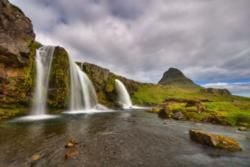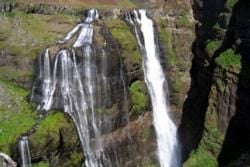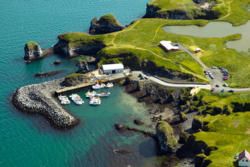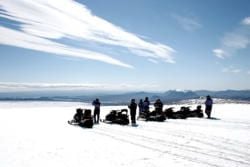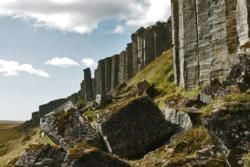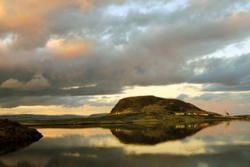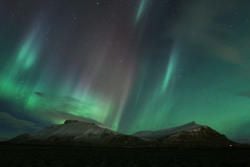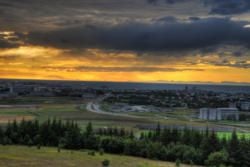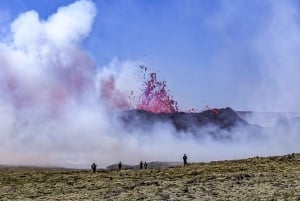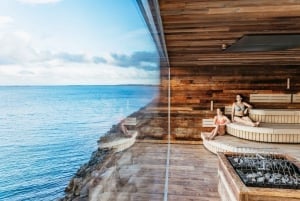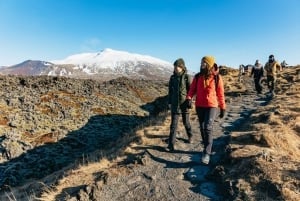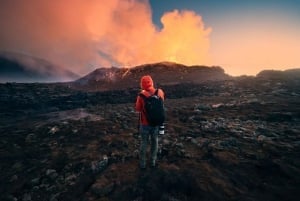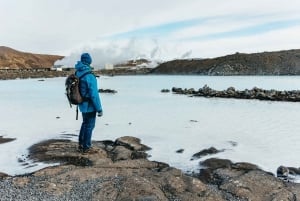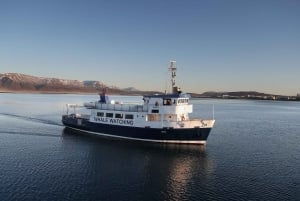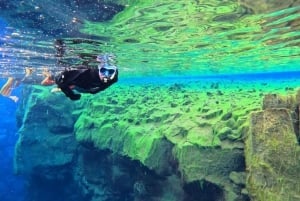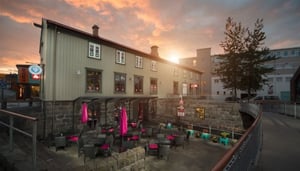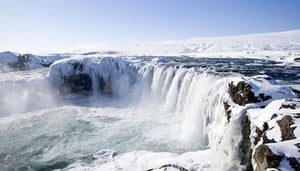West Iceland
West Iceland is the part of Iceland that stretches from the capital area and up to the West Fjords.
In West Iceland you‘ll find excellent examples of beautiful nature, valleys, glaciers, mountains, volcanos and amazing craters, not to mention the magnificent coastline. Activities in West Iceland include sailing, horseback riding, swimming in geothermal pools, hiking, golf, and museums. It is very easy to navigate the easy terrain and quality roads to explore the area on your own in a rental car and there is no shortage of buses, which enables you to experience the part of the country without any trouble all year around.
Snaefellsjokul Glacier is not only a glacier, it‘s also an active volcano, and the setting of Jules Vernes famous book, Journey to the Centre of the Earth. Snaefellsjokull is a greatly energetic and mystical place. Excursions are offered from Arnarstapi on the southern side. Some of the Icelandic Sagas also took place in this area, and figures prominently in Under the Glacier by Halldor Laxness, the Icelandic Nobel prize winning author. The view from the top extends to Reykjanes Peninsula on the south side and the magnificent Westfjords on the north side.
Arnarstapi used to be an important trading post in Iceland, and it was way more populated than it is today. The Arnarstapi pier is surrounded by basalt columns, ravines and grottos. You can take a walk around the beautiful coastline to view the magnificent lava formations and watch the birdlife. At the beach stands the statue of Bardur Snaefellsas made by artist Ragnar Kjartansson. If you want to see spectacular natural beauty, rugged shore cliffs and vibrant birdlife. Close to Arnarstapi there are caves, volcanic craters and lava formations.
Langjokull Glacier is the second largest glacier in Iceland, after Vatnajokull. Situated in the west of the Icelandic Highlands and clearly visible from Haukadalur. The view from Langjokull is beyond compare, particularly on a clear day. Hiking routes and snowmobile adventure trips are available, provided by companies such as Artic Adventures and Mountaineers of Iceland
Surtshellir is Iceland‘s most famous lava cave, inhabited by outlaws and sheep rustlers in the old days. It‘s a big lava tube that can be explored if you have the right gear, preferably under guidance of professionals. Surtshellir is 1310m long and 8-10m high for the most part.
Flatey Island is the largest of the western islands, in Breidafjordur. Flatey and the islands surrounding it are believed to have forged from under the weight of a great glacier during the ice age. The island is hardly populated – Most of the houses there are only occupied in the summer. In the winter time, the total population is five people. Flatey was an important fishing centre back in the day. Flateyjarbok, one of the most impressive of the ancient Icelandic saga manuscripts, was preserved in Flatey. It is a truly beautiful and inspiring destination and despite its size you can find both restaurants and hotels there.
The majority of the Icelandic film Brúðguminn (White Night Wedding) was shot in Flatey. We recommend that you watch the film, you can get a good idea why from the trailer.
Lysuholslaug is a natural pool in the south of Snaefellsnes with geothermally heated mineral water straight from the ground. The water is rich with minerals, and considered to be healthy and healing. It contains no added chemicals so it‘s completely chlorine-free! A heavenly experience for your body and your mind. It‘s the only mineral water pool in the country, and it‘s very popular among travelers. Don‘t be discouraged by the color of the water – It may seem dirty because of the growth and silica mud, but it‘s actually very clean. The pool is drained and thoroughly cleaned every eight days, which is more than you can say about most of the pools in the world.
Halldor Laxness, the Nobel Prize winning author we mentioned before, lived at Gljufrasteinn in Mosfellsbaer with his family for over 50 years. Gljufrasteinn is now a museum dedicated to Laxness with audio guides in many languages. The house itself was built in 1945 and has remained unchanged since he lived there. There is a souvenir shop and multimedia show in the reception.
Hraunfossar (Lava Falls) are an unusual natural phenomena. It‘s a series of waterfalls, formed by rivulets streaming over a distance of 900 meters out of Hallmundarhraun. The waterfalls pour into the Hvita river from ledges of rock in the lava. Clear, cold springs of the subterranean water seep through the lava and into the river, creating tiny waterfalls and rapids. Hraunfossar are situated near Husafell and Reykholt.
Glymur is the highest waterfall in Iceland, and has a cascade of 196m. Glymur situated at the rear end of Hvalfjordur, where the landscape is unforgettable. It may take a while to get to see Glymur, but it‘s totally worth the hike. At the end you will see the water streaming down a steep slope over grassy rocks and stark canyon.
Mt. Akrafjall is a mountain close to Akranes between Hvalfjordur and Leirarvogur. This 653 metre mountain offers one of the best views in West Iceland, across the Faxafloi Bay, and a panoramic view from Reykjanes to Snaefellsjokull. The highest peak is named Geirmundartindur. Take a hike on Akrafjall, and don‘t forget to sign the guestbook on top.
Gerduberg is a series of rocky dolerite basalt columns that are situated in Hnappadalur on the inwardly Snaefellsnes, 46km away from Borgarnes town. It‘s an impressive wall of massive and spectacular basalt columns that form geometric patterns in the cliffs. The escarpment of grey basalt rises to a height of 50m, resembling a shattered cliff with piles of scree and broken rock surrounding the base.
Enjoy all the adventure that West Iceland has to offer. We‘re only able to list a few of the gems in the region, there are plenty more to be found and explored.


